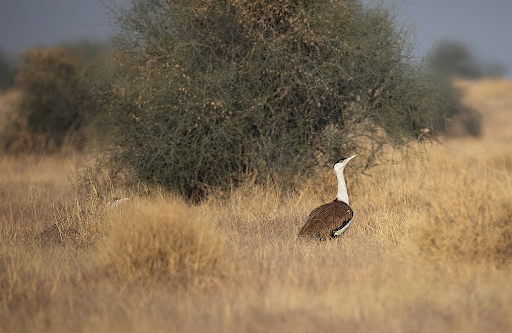




Source: HINDU
Disclaimer: Copyright infringement not intended.
The Asiatic lion once widespread from the Mediterranean to north India is now found only in the Gir Forest ecosystem of Gujarat.
The estimated population of Asiatic lions in Gujarat has risen to 891 in 2025 from 674 in 2020—an increase of 217 lions over 5 years.
Lions were earlier confined to Gir National Park (Junagadh and Amreli).
As of 2025, lions have spread to 11 districts: Junagadh, Gir Somnath, Amreli, Bhavnagar, Rajkot, Morbi, Surendranagar, Devbhoomi Dwarka, Jamnagar, Porbandar and Botad.
384 lions were located inside Gir and 507 lions outside it indicating a shift into non-forested and coastal habitats including areas like Mitiyala, Girnar, Pania, and Barda sanctuaries.
Bhavnagar district recorded the largest pride.
|
Aspect |
Details |
|
Scientific Name |
Panthera leo persica |
|
Common Name |
Asiatic Lion |
|
IUCN Status |
Endangered |
|
Legal Protection |
Schedule I of the Wildlife (Protection) Act, 1972 Appendix I of CITES |
|
Historical Range |
From Turkey to eastern India |
|
Current Range |
Primarily in Gujarat especially the Gir Forest and surrounding areas |
Primary Habitat: Dry deciduous forests, scrublands and savannahs of the Gir Forest in Gujarat.
Protected Areas:
Gir National Park
Gir Sanctuary
Pania Sanctuary
Mitiyala Sanctuary
Girnar Sanctuary
Lions have been observed in areas beyond traditional habitats including coastal regions and even swimming to Diu Island.
|
Feature |
Asiatic Lion |
|
Size |
Slightly smaller than African lions |
|
Mane |
Less developed; ears often visible |
|
Skin Fold |
Prominent longitudinal fold of skin along the belly |
|
Tail Tuft |
Less bushy compared to African counterparts |
Habitat Loss due to agricultural expansion and human encroachment.
Lions venturing into human settlements leading to potential conflicts.
Illegal hunting for body parts.
Vulnerability to epidemics like canine distemper and avian influenza .
Limited genetic diversity due to a single population source.
Project Lion was launched in 2020 to ensure long-term conservation including habitat development and disease control.
Removal of illegal plantations and reforestation with native species to restore lion habitats.
Involving local communities in conservation through awareness and compensation schemes.
Use of GPS collars and surveillance to track lion movements and health.
Chandraprabha Sanctuary (1957): Initial reintroduction failed due to inadequate habitat and monitoring.
Currently Kuno Wildlife Sanctuary (Madhya Pradesh) is identified as a potential site for establishing a second free-ranging population to mitigate extinction risks. Despite a Supreme Court directive in 2013, relocation has faced state-level resistance from Gujarat.
Sources:
|
PRACTICE QUESTION Q. In the 2025 census, which new habitats have been reported to host Asiatic lions outside the Gir Forest? A. Buxa and Jaldapara Wildlife Sanctuaries Answer: C. Explanation: These sanctuaries along with non-forested and coastal areas in Saurashtra now host lion populations. |






© 2026 iasgyan. All right reserved